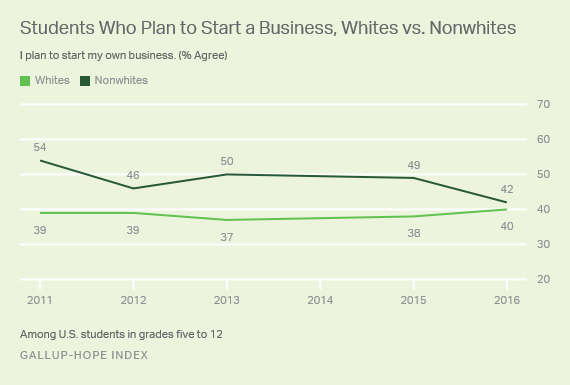
Tick marks show the number of migrants (inflows and outflows) in thousands. States are ordered clockwise by the size of inflows. The top ten outflow states are colored; all other states are in grey. Credit: Nature Climate Change.
Sea level rise is typically thought of as a coastal problem, with cities from New York to San Francisco pondering new coastal defenses such as sea walls and sturdier buildings.
However, by making large swaths of the U.S. shoreline uninhabitable by the end of this century, sea level rise could reverberate far inland, too. In fact, every single U.S. state will be affected by climate change-induced sea level rise, a new study found.
The biggest net population gain would be in Texas, which […]

Don Benton and Doug Ericksen, recently appointees to the Trump EPA
Just days after taking office, President Trump invited American manufacturers to recommend ways the government could cut regulations and make it easier for companies to get their projects approved.
Industry leaders responded with scores of suggestions that paint the clearest picture yet of the dramatic steps that Trump officials are likely to take in overhauling federal policies, especially those designed to advance environmental protection and safeguard worker rights.
Those clues are embedded in the 168 comments submitted to the government after Trump signed a presidential memorandum Jan. 24 instructing the Commerce Department to figure out how to ease permitting and trim regulations with the aim of boosting domestic manufacturing. The Environmental Protection Agency has emerged as the primary target in these comments, accounting for nearly half, with the Labor Department in second place as the subject of more than one-fifth, according to a Commerce Department analysis.
Among the notable items on industry’s to-do list:
●BP wants to make it easier to […]
 There are neighborhoods in Baltimore in which the life expectancy is 19 years less than other neighborhoods in the same city. Residents of the Downtown/Seaton Hill neighborhood have a life expectancy lower than 229 other nations, exceeded only by Yemen. According to the Washington Post, 15 neighborhoods in Baltimore have a lower life expectancy than North Korea. (emphasis added)
There are neighborhoods in Baltimore in which the life expectancy is 19 years less than other neighborhoods in the same city. Residents of the Downtown/Seaton Hill neighborhood have a life expectancy lower than 229 other nations, exceeded only by Yemen. According to the Washington Post, 15 neighborhoods in Baltimore have a lower life expectancy than North Korea. (emphasis added)
North Korea.
And while those figures represent some of the most dramatic disparities in the life expectancy of black Americans as opposed to whites, a recent study of the health impacts of racism in America reveals that racist attitudes may cause up to 30,000 early deaths every year.
The study, Association between an Internet-Based Measure of Area Racism and Black Mortality, has just been published in PLOS ONE and has mapped out the most racist areas in the United States. As illustrated above, they are mostly located in the rural Northeast and down along the Appalachian Mountains into the South. How they did it and what it may mean are below the fold.
We already know about the racism that led to Jim […]
OTTAWA, ONTARIO — The current approach to cannabis does not work. It has allowed criminals and organized crime to profit, while failing to keep cannabis out of the hands of Canadian youth. In many cases, it is easier for our kids to buy cannabis than cigarettes.
That is why the Government of Canada, after extensive consultation with law enforcement, health and safety experts, and the hard work of the Task Force on Cannabis Legalization and Regulation, today introduced legislation to legalize, strictly regulate and restrict access to cannabis.
The proposed Cannabis Act would create a strict legal framework for controlling the production, distribution, sale and possession of cannabis in Canada. Following Royal Assent, the proposed legislation would allow adults to legally possess and use cannabis. This would mean that possession of small amounts of cannabis would no longer be a criminal offence and would prevent profits from going into the pockets of criminal organizations and street gangs. The Bill would also, for the first time, make it a specific criminal offence to sell cannabis to a minor and create significant penalties for those who engage young Canadians in cannabis-related offences.
In addition to legalizing and strictly regulating cannabis, the Government is toughening laws […]
 Story Highlights
Story Highlights
- 42% plan to start a business, down from 54% in 2011
- 12-point drop among nonwhites; little change among whites
- Entrepreneurial ambition remains flat nationally
WASHINGTON, D.C. — Entrepreneurial ambition has receded among racial and ethnic minority students in grades five through 12 in the U.S., according to the latest findings from the Gallup-HOPE Index. Though a majority of nonwhite students (54%) said in 2011 that they intended to start their own business, this figure fell to a new low of 42% in 2016.

These results are based on telephone surveys conducted Sept. 12-Nov. 7, 2016, with a nationally representative sample of 1,006 U.S. students in grades five to 12. While yearly fluctuations among nonwhite students may reflect smaller sample sizes among this group, the drop in entrepreneurial ambition between 2011 and 2016 is significant.
Nonwhite students’ entrepreneurial ambition once outpaced white students’ to a significant degree, but this edge has nearly evaporated. The 12-percentage-point drop since 2011 in the proportion of nonwhite students saying they plan to start a business puts them on par with white students. While […]








